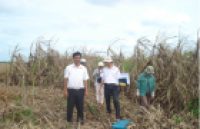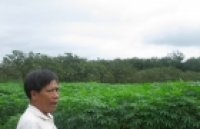| In pursuit of purple: anthocyanin biosynthesis in fruits of the tomato clade |
|
Over the past decade, progress has been made in the characterization of anthocyanin synthesis in fruits of plants belonging to the tomato clade. The genomic elements underlying the activation of the process were identified, providing the basis for understanding how the pathway works in these species. In this review we explore the genetic mechanisms that have been characterized to date, and detail the various wild relatives of the tomato |
|
Jacopo Menconi, Pierdomenico Perata, Silvia Gonzali Trends Plant Sci.; 2024 Jan 3:S1360-1385 (23) 00395-3. doi: 10.1016/j.tplants.2023.12.010. AbstractOver the past decade, progress has been made in the characterization of anthocyanin synthesis in fruits of plants belonging to the tomato clade. The genomic elements underlying the activation of the process were identified, providing the basis for understanding how the pathway works in these species. In this review we explore the genetic mechanisms that have been characterized to date, and detail the various wild relatives of the tomato, which have been crucial for recovering ancestral traits that were probably lost during evolution from green-purple to yellow and red tomatoes. This knowledge should help developing strategies to further enhance the status of the commercial tomato lines on sale, based on both genome editing and breeding techniques.
See https://pubmed.ncbi.nlm.nih.gov/38177013/
Figure 1: Anthocyanin structure (A) and anthocyanin biosynthesis (B).
|
|
|
|
[ Tin tức liên quan ]___________________________________________________
|


 Curently online :
Curently online :
 Total visitors :
Total visitors :
(271).png)


